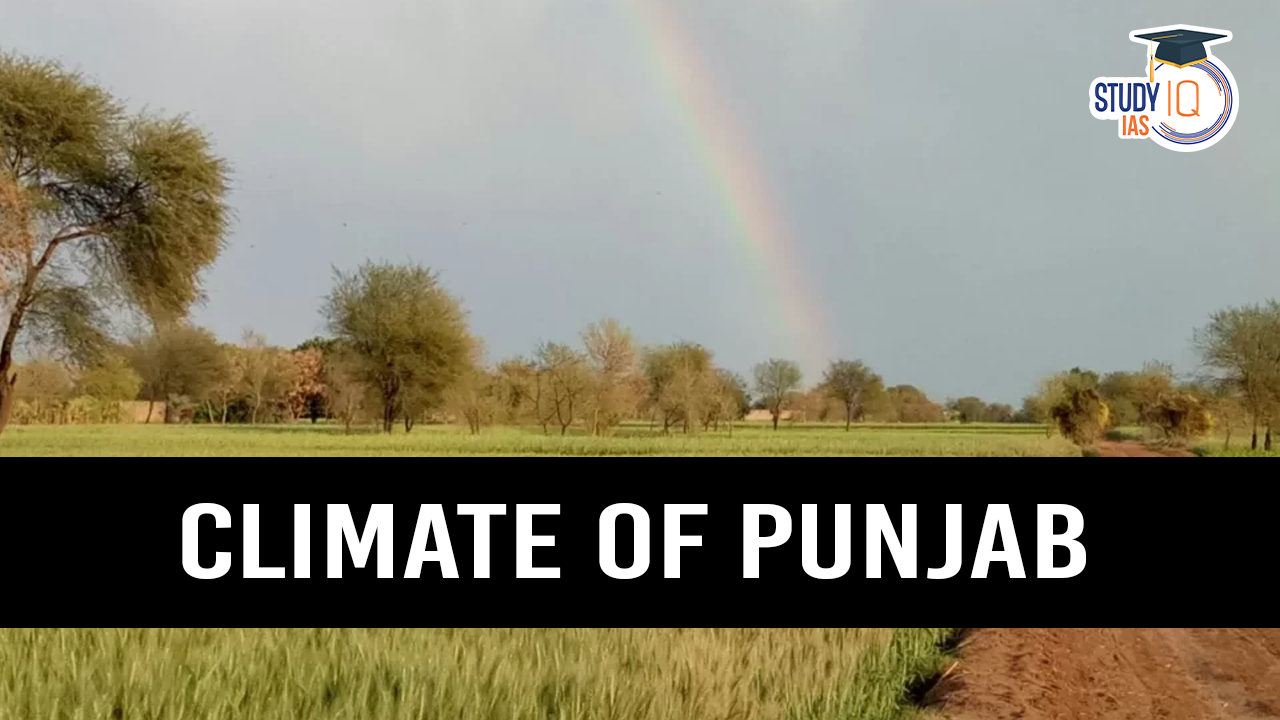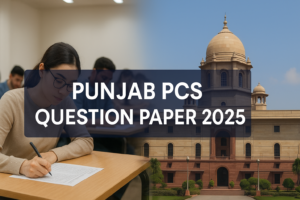The state of Punjab, located in the subtropical belt in the northwestern part of the Indian subcontinent, is approximately 1600 km away from the Bay of Bengal. Its geographical features include the Shivalik Hills on its northwestern border and Rajasthan to the south, which influence its climatic conditions. Punjab experiences extreme temperatures, with very hot summers and cold winters. Areas near the foothills of the Himalayas receive heavy rainfall, while regions farther from the hills experience lower rainfall and higher temperatures.
Climate of Punjab
Punjab’s climate is tropical, semi-arid, and subtropical monsoon-type, characterized by cold winters and hot summers. The average annual rainfall ranges from 580 mm in the plains to 960 mm in the sub-mountain regions, decreasing from north to south. In 2021, the average rainfall in Punjab was recorded at 565.9 mm. Temperatures in the state vary between -2°C and 40°C.
Punjab has three main seasons:
- Summer (April to June)
- Monsoon (July to September)
- Winter (October to March)
Additionally, there are two transitional seasons:
- Post-monsoon (September to November end)
- Post-winter/Pre-summer (March to mid-April)

| Season | Formation | Characteristics |
| Hot and Dry Season | Begins with the northward shift of the sun towards the Tropic of Cancer after the vernal equinox, causing a temperature rise. | – Tropical continental air mass, originating from southwest Asia, heats further while passing over Punjab. – Winds around the low-pressure area become turbulent, leading to dust storms that blow away harvested crops. – From May to June, hot and dry westerly winds called ‘loo’ increase temperatures, creating desiccating and scorching conditions. – Lowest pressure in the region forces south-west monsoons to arrive by the end of June. |
| Rainy Season | By late June, low-pressure areas in Punjab attract the southwest monsoon. | – Both the Arabian Sea and Bay of Bengal monsoon branches bring moderate rainfall, especially in eastern hilly districts. – Rainfall decreases towards the west and southwest. – The rains initiate the sowing of Kharif crops, marking the start of the agricultural year. – The dry landscape turns green, with nature in full bloom. |
| Cold Season | Starts mid-November; cold winds from the Caspian Sea and Turkmenistan bring frost and fog. | – Punjab’s continental climate causes extreme cold due to its distance from the sea. – Weak temperate cyclones from the Mediterranean bring minimal but beneficial rainfall for Rabi crops. – Cold weather intensifies in December and January, with minimal temperature variation in January. – Mean daily temperature remains below 21°C, with night temperatures sometimes dropping below freezing. |
| Transitional Seasons | Formation | Characteristics |
| Autumn | Punjab is the first state in India to witness the monsoon withdrawal in September, with changes continuing until November. | – Generally dry and fair weather. – Days remain warm, while nights become pleasant. |
| Spring | Begins in March with a sharp rise in temperature and a reduction in western disturbances. | – Occasional showers with hailstorms damage standing crops. – Winds become warm and dry by late March, and the rapid change in weather transitions into the hot season by mid-April. |
| Punjab PCS Important Links | ||
| Punjab PCS Notification | Punjab PCS Apply Online | Punjab PCS Syllabus |
| PPSC Eligibility Criteria | PPSC PYQ | Punjab PCS Notes |


 Punjab PCS Answer Key 2025 – Check Sol...
Punjab PCS Answer Key 2025 – Check Sol...
 Punjab PCS Question Paper 2025 Out: Down...
Punjab PCS Question Paper 2025 Out: Down...
 Punjab PCS Admit Card 2025 Released: Dow...
Punjab PCS Admit Card 2025 Released: Dow...


















